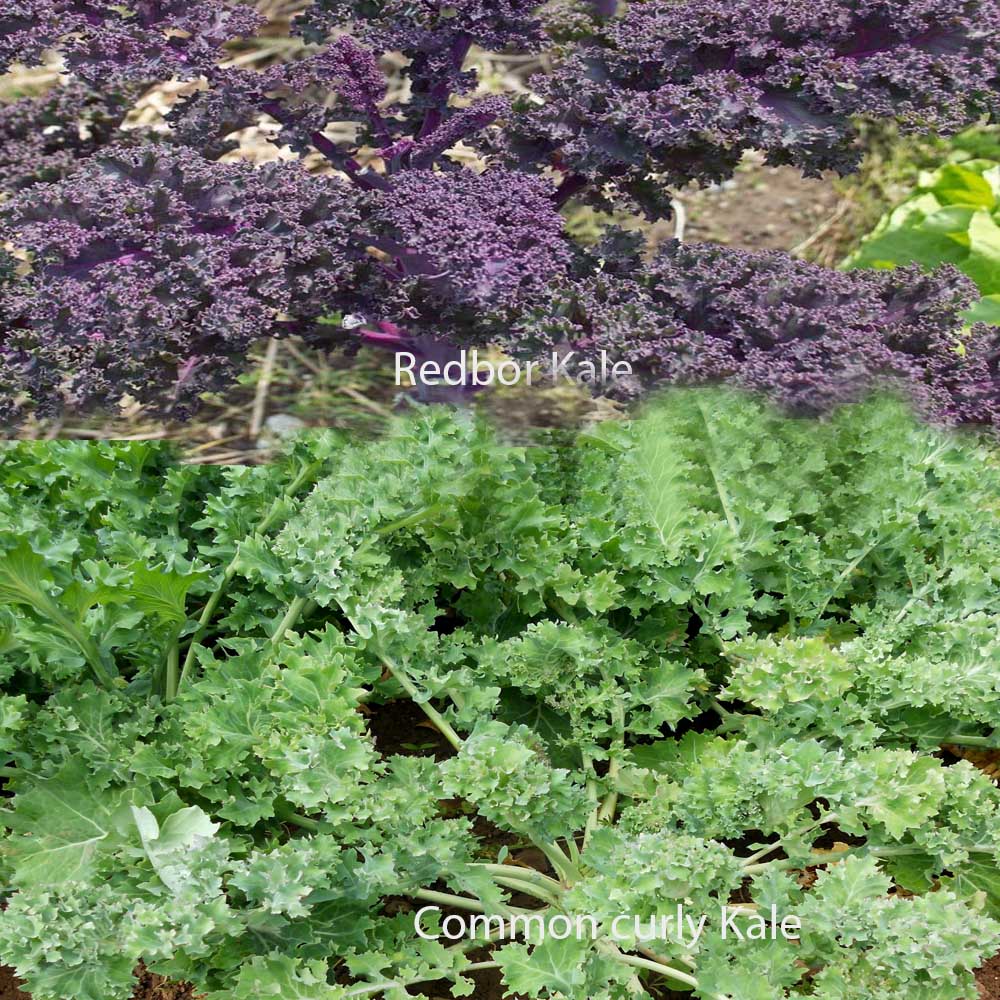

Kale:
This cabbage relative is so diverse, its living presence so dramatic, and its ease of culture so universal, that it is bound to be an important vegetable into the next millennium.
Red Russian' has done more than any other variety to enhance kale's image. This heirloom (a variety of B. napus) is essentially a rutabaga developed for its top growth rather than its root.
Among its major advantages, it's good raw in salads, and its oak-shaped leaves -- in colors ranging from blue-green to purple-red -- show off in edible landscapes and mesclun salads. Cold weather intensifies its color, and it will survive winter lows of 0° F to produce a large crop of purple-stemmed sweet shoots in spring.
Lacinato Kale (Dinosaur Kale, Tuscan Kale, Cavolo Nero)This Italian variety of kale was grown by Thomas Jefferson in his garden at Monticello, according to Berkley Wellness. The dark blue-green, slender, long leaves have none of the curls and frills common in kales. Rather, the leaves are rumpled and puckered like savoy cabbage and curled under along the entire margin. The leaf texture also looks a bit reptilian, so the coolest nickname for this kind of kale goes to the dinosaur. Lacinato is used for Tuscan soups and stews, but you could use it in salad too.
Common Curly Kale
This is the type of kale you usually see in the grocery store. It’s a pale to deep green with large, frilly-edged leaves and long stems. It’s often sold as loose leaves bound together, even though it grows as a loose head. Put it in salad, sauté, toss it in a hearty bean soup, or blend it in a fruit smoothie. White Russian kale is arguably the sweetest flavored kale that we grow. It’s also the most vigorous and cold hardy of our kale varieties, and overwintered white Russian kale produces an abundant spring flush of new growth. Both seasoned and novice gardeners would be well-served by growing this variety.
Redbor Kale The stunning 3-foot-tall hybrid can be both ornamental and edible. Its mass of well-curled reddish leaves with deep purple veins turns a solid, deep violet in cool weather. Redbor is a great plant for an ornamental garden, where you occasionally pluck off few leaves to use as edible plate decor.
For more info, see: https://garden.org/learn/articles/view/404/
6 recipes selected, Page 1 of 1











